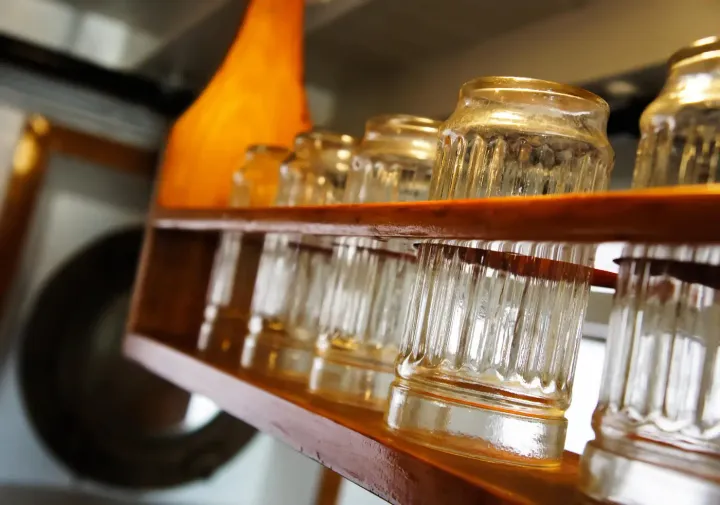Sailing terminology can be overwhelming to experts and beginners. Here, we break down the difference between a headsail and a jib.
As a centuries-old tradition, getting used to terms on a sailboat is one of the most difficult jobs. As a new sailor, you may be asking yourself, “What is the difference between a headsail and a jib?”
Simply put, the jib is a specific type of headsail. A headsail is any sail that is placed forward of the mast at the front of the boat. A jib is a particular kind of headsail, a triangular sail designed to work in conjunction with the mainsail for faster speeds and better handling.
Though the jib is a type of headsail, it is important to understand the difference between the two in order to choose which sail is best for your boat and the conditions it is sailing in. In this article, we break down both types of sails, giving you the information needed to determine which is right for you.
What are the types of sails on a boat?
To fully understand the difference between the headsail and jib, we need to first break down the types of sails that come with a boat. Almost every boat is equipped with these tree sails:
- Mainsail - this is the large sail aft of the boat
- Headsail - A smaller sail in the front
- Other sails - Usually specialty sails that are used in certain conditions
What is a head sail?
The headsail is the easiest to identify, as it is the frontmost sail at the “head” of the boat. They come in various styles, depending on the weather, sea conditions, and the shape and size of your boat.
Usually, sailors bring a mix of headsails that perform under different circumstances. Each type of headsail allows air to flow across the sails at certain angles, either slowing or speeding up the boat. Additionally, headsails are designed to improve the aerodynamics and maneuverability of your vessel.
Before choosing which type of headsail you will use, you want to consider the common conditions in your sailing destination, what type of sailing you are doing, and how your vessel is set up. The following are some of the most common headsails:
- Jib - most common medium-sized headsail
- Genoa - a larger jib overlapping the mainsail
- Spinnakers - balloon-like shape and larger sails for
- Gennakers - a mix between genoa and spinnakers
- Specialty - headsails created for specific weather, speed, or water current conditions
Headsails can also be furled, adjusted, or completely brought down and changed in order to maintain control of the boat in changing conditions. All sailors constantly adjust a sail’s positioning, as wind, currents, and other factors are important to consider while boating. The size, angle, and headsail type are all key to a consistent speed while keeping the crew and ship safe.
Traditionally, they were made of Canvas, but now nylon, a sturdier and cheaper material, is used. Now, it is common to see logos and different colors on headsails, too.
What is a jib sail?
A jib is the most common kind of headsail. Jib sails’ triangular shape helps improve the movement handling of the ship and increases the sail area to gain higher speeds. Because the jib is over the bow, or front, of the boat, it gives better dexterity to maneuver the ship more delicately.
Jibs are used to “break” incoming wind, moving the breeze into the gap between the back of the jib and the front of the mainsail. Not only does this breaking of wind improve the aerodynamics of your boat, giving it maximum speed, but it also makes your mainsail more efficient and balanced, pulling the bow of the ship down while the mainsail commonly pulls the stern down.
Smaller jibs are usually more popular on vessels, as they are lighter, easier to handle, and cheaper. Additionally, they can be manned by fewer people, as their lightweight quality and small size make them easier to use solo. They work best in conditions of high wind speed, balancing out the mainsail to stabilize the boat.
The genoa, or overlapping jib, is a larger jib sail that overlaps with the mainsail. These are primarily used in moderate or light winds to pick up speed. Because of their larger sail area, genoa sails are more difficult to handle. Added to this that the genoa overlap with the mainsail, the furling and unfurling can be more complicated, too.
Another type of jib is the storm jib, which fairly obviously is designed to be used during rough weather. These are often smaller sails made of more durable, robust fabric. These sails are useful in heavy winds, helping you sail steadily through wind speeds over 30 knots.
Conclusion
When choosing between the various options of sails, consider personal factors like your sailing style, convenience, and performance. It is important to research what your boat manufacturer or sailmaker suggests for your boat, so you can choose which headsail or jib is the right size and specialty for you.



